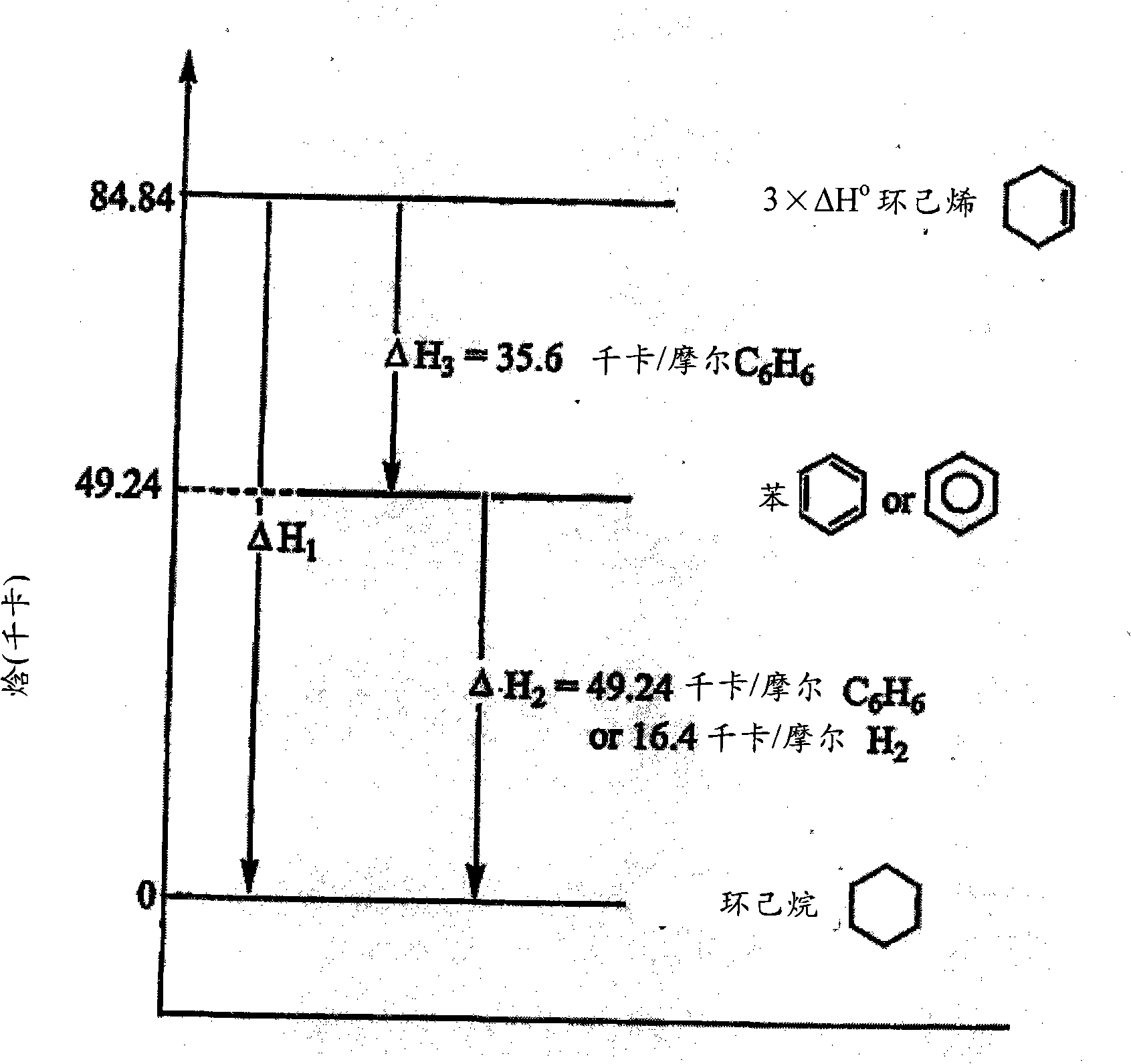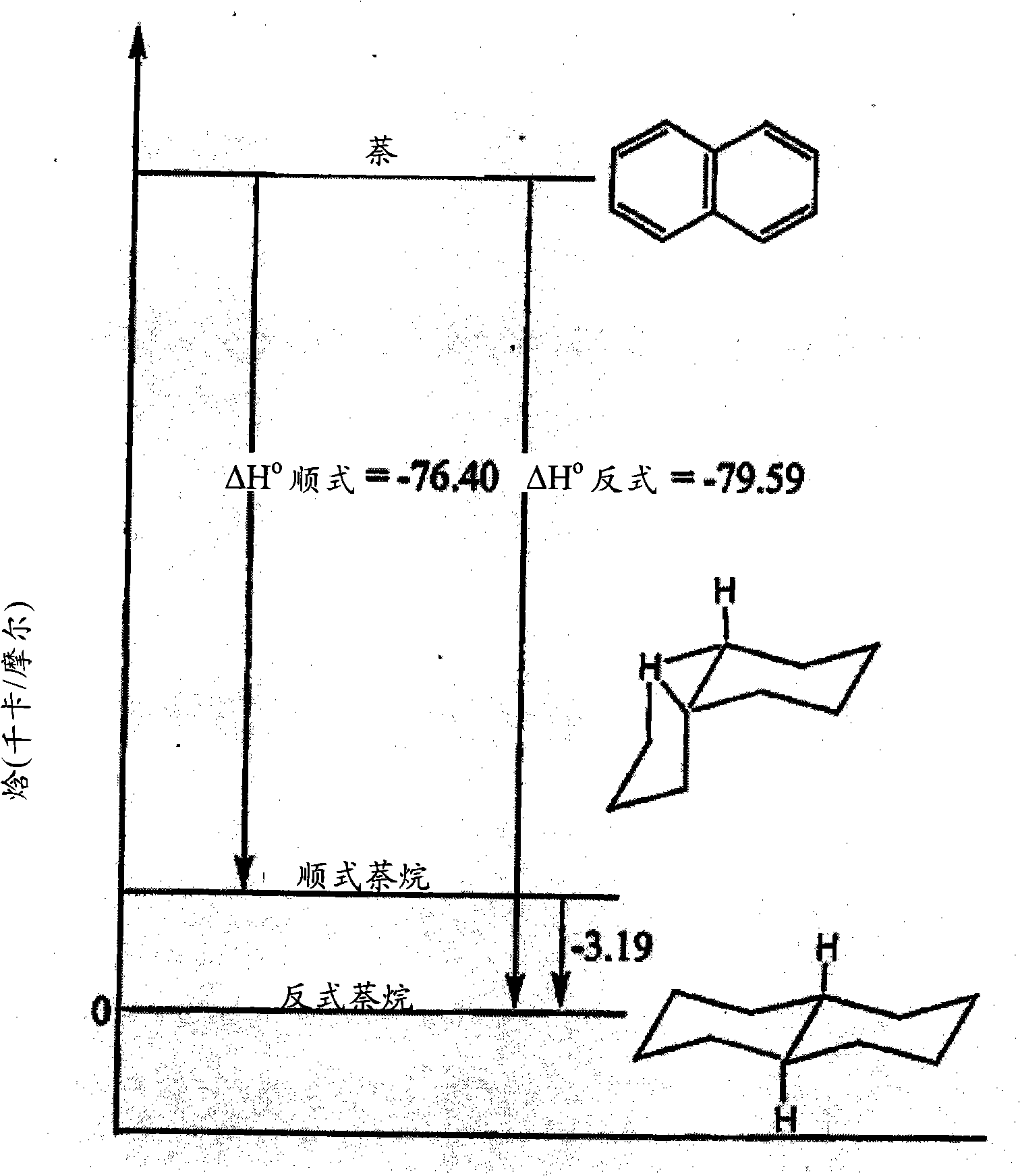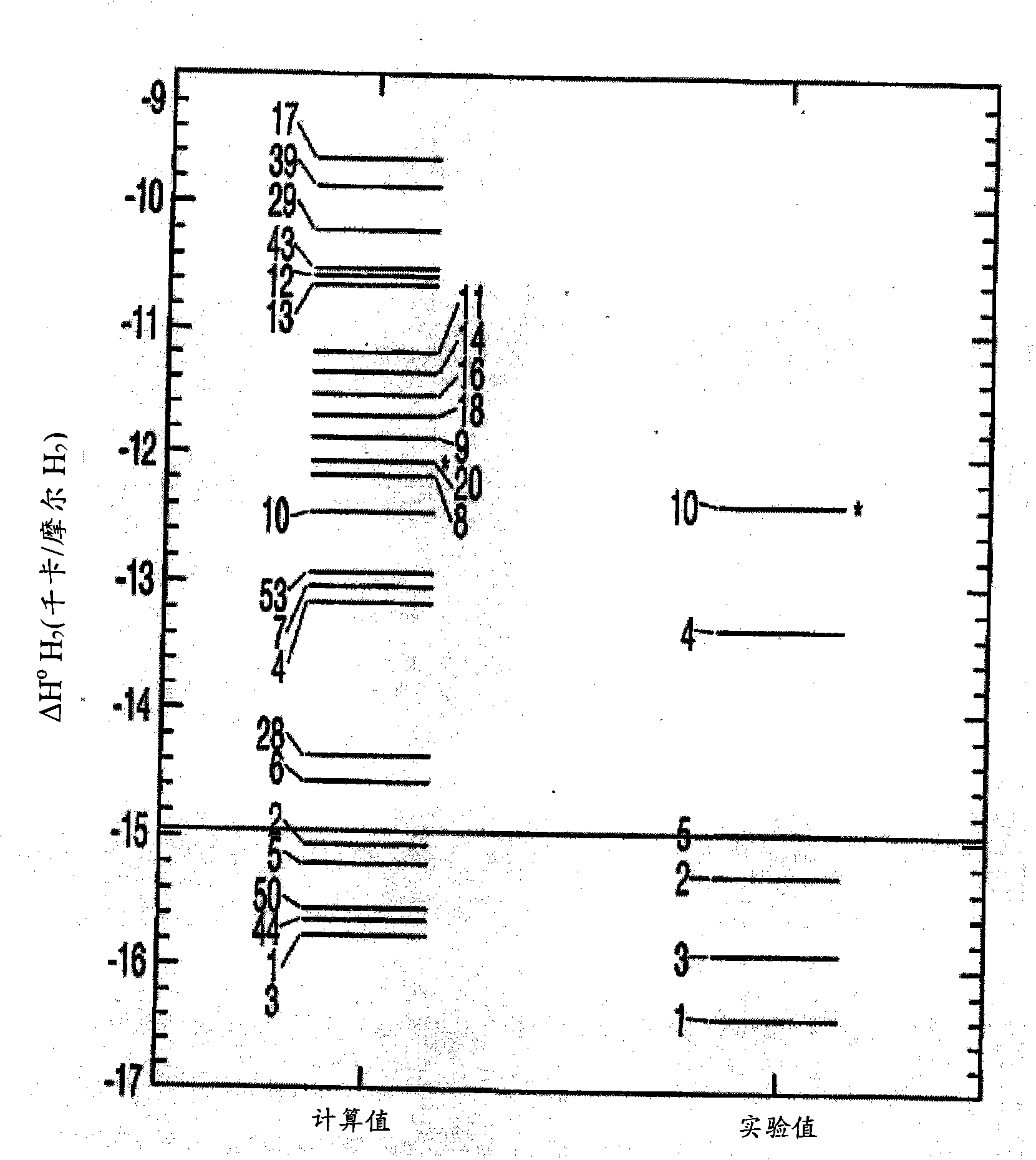Hydrogen storage reversible hydrogenated of pi-conjugated substrates
A conjugated and matrix technology, applied in the field of reversible hydrogenation of π-conjugated matrix, which can solve the problems of increasing fueling time and complexity
- Summary
- Abstract
- Description
- Claims
- Application Information
AI Technical Summary
Problems solved by technology
Method used
Image
Examples
Embodiment 1
[0324] Example 1: Reversible hydrogenation of pyrene
[0325]A 0.2 g sample of pyrene (>99%, Fluka) and 0.1 g carbon-supported rhodium catalyst (5% rhodium, Acros Organics) were hand ground with an agate mortar and pestle until a uniformly colored mixture formed. The mixture was then added to a 50 mL high pressure reactor (Parr instruments) equipped with custom milling equipment. The grinding apparatus consists of a long stirring shaft with curved paddles. The reactor bottom consisted of stainless steel with a concave bottom, which allowed the agitator shaft to sweep across the bottom of the reactor with 1 / 8 inch clearance. Mechanical agitation of the sample mixture was performed by adding 5-8 stainless steel ball bearings of various sizes (1 / 16-1 / 4 inch diameter). The stirrer motor was programmed so that the direction of rotation of the stirrer alternated between clockwise and counterclockwise during the reaction, ensuring that all of the sample mixture contacted the grindi...
Embodiment 2
[0331] Example 2: Reversible hydrogenation of coronene with 5% carbon-supported rhodium catalyst and mechanical grinding
[0332] A 0.125 g sample of coronene (>99%, Acros Organics) and 0.065 g rhodium carbon catalyst (5% rhodium, Acros Organics) were hand ground with an agate mortar and pestle until a homogeneous dark green mixture formed. The mixture was then added to a 50 ml autoclave (Parrinstruments) equipped with custom milling equipment. The grinding apparatus consists of a long stirring shaft with curved paddles. The reactor bottom consisted of stainless steel with a concave bottom, which allowed the agitator shaft to sweep across the bottom of the reactor with 1 / 8 inch clearance. Mechanical agitation of the sample mixture was performed by adding 5-8 stainless steel ball bearings of various sizes (1 / 16-1 / 4 inch diameter). To ensure that all sample mixture contacts the grinding balls, the stirrer motor was programmed so that the direction of rotation of the stirrer al...
Embodiment 3
[0337] Example 3: Reversible hydrogenation of coronene with 5% rhodium on carbon catalyst and mechanical milling
[0338] A 0.066 g sample of coronene (95%, Acros Organics) and 0.033 g rhodium carbon catalyst (5% rhodium, Acros Organics) were hand ground with an agate mortar and pestle for 15 minutes until a homogeneous dark green mixture formed. Then, the samples were placed in adsorption units at different pressures. The adsorption unit consists of two small units of the same pressure, which span different pressure ranges. The absolute pressure of the two small cells is measured independently by the pressure sensor. Adsorption of hydrogen by the sample is characterized by a decrease in the pressure in the sample cell relative to the reference cell, while maintaining the same temperature between the two cells. The samples were degassed under vacuum for 30 minutes at room temperature. The sample cell and reference cell were placed under 970 pascals (67 bar) of hydrogen and ...
PUM
| Property | Measurement | Unit |
|---|---|---|
| boiling point | aaaaa | aaaaa |
| melting point | aaaaa | aaaaa |
| softening point | aaaaa | aaaaa |
Abstract
Description
Claims
Application Information
 Login to view more
Login to view more - R&D Engineer
- R&D Manager
- IP Professional
- Industry Leading Data Capabilities
- Powerful AI technology
- Patent DNA Extraction
Browse by: Latest US Patents, China's latest patents, Technical Efficacy Thesaurus, Application Domain, Technology Topic.
© 2024 PatSnap. All rights reserved.Legal|Privacy policy|Modern Slavery Act Transparency Statement|Sitemap



